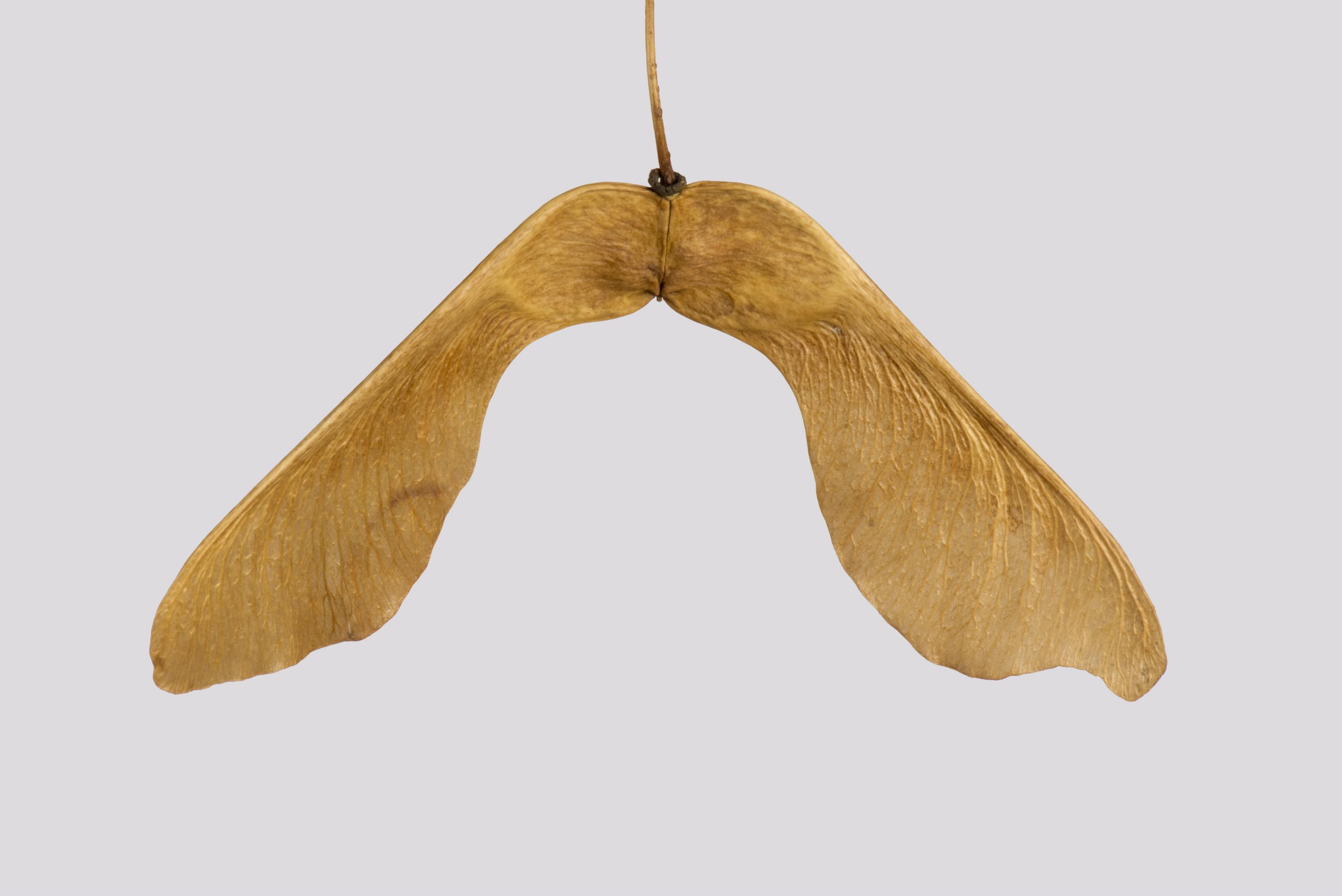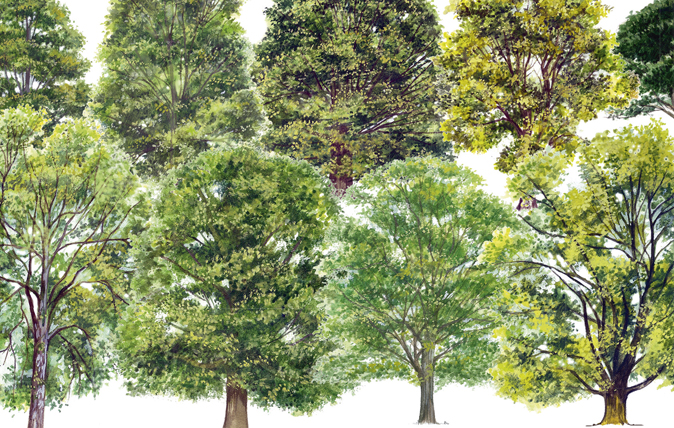Curious Questions: How do sycamore seeds spin?
A chance encounter with Nature's answer to the helicopter prompts Martin Fone to ponder how sycamore seeds managed to fall to earth so gracefully.


Every autumn the garden comes under attack from hundreds of winged seeds, some resting at a jaunty angle in the soft soil of the lawn and borders, others lying forlornly on the patio. The source of the fusillade is not difficult to discern: a sycamore across the road whose tall structure and broad, rounded crown gives some welcome relief to what is otherwise a nondescript suburban setting.
The sycamore — or Acer pseudoplatanus, a species of the maple genus — is not indigenous to these islands. Opinion is divided, though, as to whether it should be categorised as a neophyte, a plant that has been naturalised through human intervention on or after the sixteenth century, or an archaeophyte, one introduced earlier. The dearth of traditional names suggests a later introduction, but there is evidence that it was known in Scottish Gaelic from around the late 6th century as fior chrann, roughly translated as ‘true tree’.
Whenever and however it first appeared, however, the consensus is that it was not until the sixteenth century that the sycamore, a native of Central Europe and Western Asia, began to make its presence felt on the British landscape. The tree was valued for its generous shade, as Boyet noted in Shakespeare’s Love’s Labour’s Lost (Act 5, scene 2); ‘Under the cool shade of a Sycamore/ I thought to close my eyes some half an hour’.
"The autorotation process of spinning samaras has inspired a team of scientists to create a single rotor helicopter which would be more efficient as standard helicopters use most of their fuel trying to remain stable"
There is even controversy over its name. According to Gertrude Nuttall in Trees and How They Grow (1913), the true sycamore is the Middle Eastern and African Ficus sycamorus, known in Greek as συκόμορος, also known as the fig-mulberry, whose fruit resembles that of a fig and whose leaves those of a mulberry. It was this tree, according to Christian tradition, that Zacchaeus climbed to see Jesus pass by. When mediaeval mystery plays depicted the scene, as the fig-mulberry was unknown in Western Europe, the name of sycamore was attributed to the indigenous Acer pseudoplatanus, and it stuck.
Not everyone was enamoured with the sycamore. John Evelyn, writing in Sylva (1664), lamented that its ‘honey-dew leaves, which fall early (like those of the ash) turn to mucilage and noxious insects and putrefy with the first moisture of the season, so as they contaminate and mar our walks; and are therefore, by my consent, to be banished from all curious gardens and avenues’. Evelyn’s antipathy to this invasive tree persists to this day. In the 1980s volunteers of the London Wildlife Trust organised ‘syccie bashing’ expeditions to eradicate it using brute force.
However, the sycamore is made of sterner stuff and, according to Stace and Crawley’s Alien Plants (2015), is present in 89.7% of Britain’s hectads, more than any other native tree species. Key to its success is the way it propagates itself — and this is down to its seeds, or samaras.

The sycamore’s flowers hang in spikes known as racemes, their light green colouring blending in with the tree’s canopy. As the sycamore is monoecious, each of its individual flowers can be either be male or female and are pollinated by insects, usually bees. Sometimes a sycamore tree will produce only male or female flowers; and occasionally, one entire section of the tree will be exclusively male or female. Usually, though, the flowers of either gender will be dispersed randomly throughout the tree.
Exquisite houses, the beauty of Nature, and how to get the most from your life, straight to your inbox.
It is the pollinated female flower which produces the seeds, their two fused carpels which mature into a pair of winged fruits set at acute angles. The seeds are positioned where the two fruits fuse, held in a flattened wing-like structure made of a fibrous paper tissue. Initially they are green in colour, then take on a pinkish hue and when fully developed assume the familiar brownish hue. A mature sycamore can produce thousands of these seeds.
When the samaras are mature and the conditions are right, they detach themselves from the tree, and often from their partner, to be dispersed by the wind, a process known as anemochory. They spin like a helicopter, turning upside-down to allow the heavier seed head to be the first point of contact with the earth. Not all samaras are dispersed at the same time; it is an iterative and pleasingly random process.
The benefit of allowing the wind to disperse the seeds is that they often land some distance from the parent tree, reducing the competition for resources and the risk of infection from pests and disease. Water, birds, animals and, often inadvertently, humans lend a hand in scattering the seeds which are remarkably robust and left to their own devices will germinate in the spring in even the most unlikely of places and in the most unwelcoming of soils. Not for nothing are they known as the weeds of the woodland.
Their distinctive method of travelling through the air has enthralled many through the centuries and earned the seeds nicknames such as helicopter wings, spinning jennies, whirligigs, whirlybirds, and wingnuts. Curiously though, it was not until July 2009, when Science published an article entitled Leading-Edge Vortices Elevate Lift of Autorotating Plant Seeds, that the precise mechanics of how the samaras helicopter through the air were finally understood.
A team of scientists from Wageningen University in the Netherlands and Caltech in the States built plastic models of the seeds and span them through a large tank of mineral oil. By using light from a powerful laser, they were able to measure the movement of tiny beads of oil as the model seed span through the tank. Studying the images produced the scientists found that the swirling seed generated a tornado-like vortex that sits on top of the front leading edge, which lowered the air pressure over the upper surface of the seed, effectively sucking it upwards to counter the gravitational pull. Sycamore seeds, by creating this vortex, achieve twice the lift that non-swirling seeds can.
In effect, the seeds use an almost identical aerodynamic solution to improving the performance of their flight as do insects, bats, and hummingbirds when they swing their wings back and forwards to hover. To check the vortex theory, the researchers built a wind tunnel at the University of Wageningen and used smoke to highlight the flow of air around the seeds as they span. They found that real seeds behaved as they had modelled, creating a leading-edge vortex to enhance the time they span in the air and to maximise the distance they were from the parent tree before they drift slowly to the ground.
In January 2011 New Scientist was reporting that the autorotation process of spinning samaras had inspired a team of scientists led by Evan Ulrich from the University of Maryland to create a single rotor helicopter, which, they claimed, would be more efficient as standard helicopters use most of their fuel trying to remain stable. Out of this project came another discovery about the flight of a samara; it flies in a fixed circle whose radius is determined by the pitch of the wing, giving it stability and control in the air.
Single-rotor helicopters might not be thin on the ground, but their inspiration — a sycamore seed twizzling through the air — is not just one of nature’s more remarkable autumnal sights. It's also a masterpiece of Nature's aerodynamics.

A simple guide to identifying British trees
Simon Lester goes out on a limb to identify species and stop us barking up the wrong tree.

Beech trees: A complete guide
The beech tree is one of the finest sights in British woodland: effortlessly tall and graceful, offering year-round colour in

Treetop treasures: a guide to flowering trees
Do you know the difference between blackthorn blossom and field maple flowers?

Planting big trees: What you need to know
The old advice always used to be to plant small and wait, but recent innovations mean that gardeners can plant
After graduating in Classics from Trinity College Cambridge and a 38 year career in the financial services sector in the City of London, Martin Fone started blogging and writing on a freelance basis as he slipped into retirement. He has developed a fearless passion for investigating the quirks and oddities of life and discovering the answers to questions most of us never even think to ask. A voracious reader, a keen but distinctly amateur gardener, and a gin enthusiast, Martin lives with his wife in Surrey. He has written five books, the latest of which is More Curious Questions.

